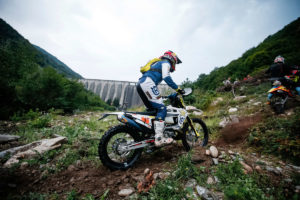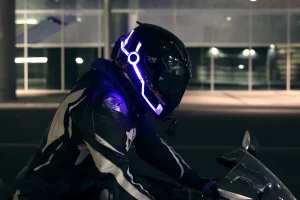If you’ve taken a cruiser wellbeing course previously, you’ll realize that turning and halting is a typical point talked about all through the procedure. There is an enormous discussion on whether ABS (anti-lock braking system) ought to be on a cruiser and questions encompassing what the system can do and if it merits the expense and weight-related with it. It’s an exceptionally discussed theme across the local bike area, and we’re here to make a plunge with our input on why you need ABS on your cruiser.
Contents
What is ABS?
ABS on motorcycles forestalls wheel locking and expands security. Motorcycles are, essentially, less steady than four-wheeled vehicles. Braking too hard can destabilize a cruiser and lead to either the front or back tire locking, making the bicycle upset or slide. On the other hand, the inability to slow down hard enough can bring about a rider neglecting to avoid an accident.
How do ABS brakes work?
ABS keeps you from lockin’ the wheels up (sliding the tires) when you hammer down on your bike’s brakes. It’s essential to get why; however: the reason for ABS is to assist you with keeping up control of your motorcycle while braking. When a tire starts to slip against the road, the treatment of a bike can change definitely and regularly capriciously. Keeping up control of the vehicle can turn into a test, most definitely. ABS exists to help moderate that hazard. Optionally, ABS can abbreviate halting distances contrasted with a pallet on an equivalent vehicle without ABS, yet genuinely just under some particular conditions.
ABS oversees brake pressure all through the system. The vehicle administrator as yet applies brake pressure, yet it very well might be balanced (quickly decreased and reapplied) utilizing an electronic system. (Even though mechanical ABS systems have been developed, most systems executed vehicles underway have been electronic-water powered.)
Your bike is fitted with two wheel-speed sensors that screen the pivot of every one of your wheels. (You may see proof of ABS, similar to a toothed reluctor ring on the brake rotor of certain motorcycles, yet that is not by any means the only method to execute a wheel-speed detecting system — some have attractive components in the wheel orientation.) There’s likewise an ABS siphon relaxing someplace, alongside certain valves. (The siphon and valves are regularly plumbed into a similar unit). At last, there is the regulator, which is essentially a PC.
Ordinarily, the ABS isn’t doing a lot if your braking input is underneath the lockup edge. If the ABS PC thinks either of your wheels is moving slower, then it ought to be comparative with the speed of the other wheel (and relative with the speed of the bicycle, whenever observed). At the same time, the brakes are applied. The vehicle activates a few valves plumbed into that wheel’s water-driven stopping mechanism to alleviate some crucial factor, permitting the wheel to turn indeed (instead of causing the tire to slide). Assuming the influenced wheel is, moving quicker than the other wheel (since you’re screwing on the brakes!), the ABS siphon then reapplies that mitigated pressing factor. This interaction proceeds until the PC distinguishes that the two wheels are moving along inside satisfactory boundaries.
ABS is a mix of two techniques: limit braking, which is successfully braking as hard as conceivable until the snapshot of loss of foothold, at that point immediately delivering pressing factor and reapplying it, and rhythm braking (brake adjustment), which is the demonstration of siphoning the brakes, viably compromising some halting distance for a diminished possibility of wheel lockup. ABS is rhythm braking brought nearly to the place of edge braking. A sublime rider can outbreak the PC from time to time under ideal conditions. However, throughout every day, ABS beats most riders, which is why it’s obligatory on new bicycles in certain pieces of the world.
Most significant cruiser producers currently offer motorcycles with ABS as one or the other norm or discretionary gear. On the off chance that you intend to purchase a cruiser to ride on-road, it is suggested that you get one with ABS. Be that as it may, ABS may not be proper for off-road riding conditions. On the off chance that you intend to utilize an ABS-prepared cruiser off-road, you can turn ABS on and off as required.
Advantages of Motorcycle ABS
A report into the advantages of Anti-Lock Braking Systems (ABS) on-road motorcycles was authorized by the Commonwealth and Victorian Governments and delivered in 2015. The report found that ABS could decrease the pace of death and severe injury from cruiser crashes by 31%, just around 20% of new motorcycles accompany ABS as standard. At the current rate of ABS bike deals, this innovation can save 22 lives between now and 2025. This figure could ascend to 35 saved lives if ABS is the norm on all new motorcycles from 2018.
ABS Do’s and Don’ts
The most disturbing thing I’ve seen from ABS practice with my understudies is the propensity of people to be frightened when it cuts in and the automatic response that follows, which is to deliver tension on the brake switch. The main tip I can give when you need to stop (which requires practice) is this:
When ABS cuts in, keep the switch pulled in as hard as possible and allow the system to halt the bicycle. When you are at a dead stop, it is alright to relinquish the switch at that point (and really at that time). Try not to endeavor to beat or balance the control as the system is working. Pull it in hard and hold it there until the bicycle stops.
Conclusion
Present-day ABS systems don’t remove control or feel from the ride. Indeed, even the most talented racers can not, at this point, out-brake the PC, even in exceptional conditions. In the present alarming cell phone occupied traffic, ABS is an incredible instrument in your line of guard against thoughtless, diverted drivers. Your ABS bicycle stops quicker and all the more securely. That is a benefit you need if you need to let it out.






